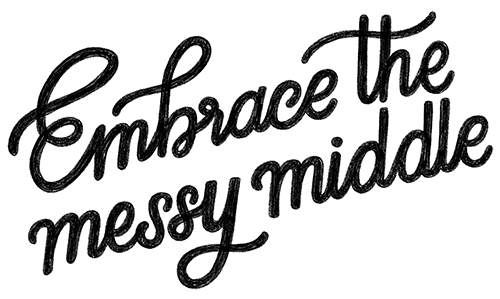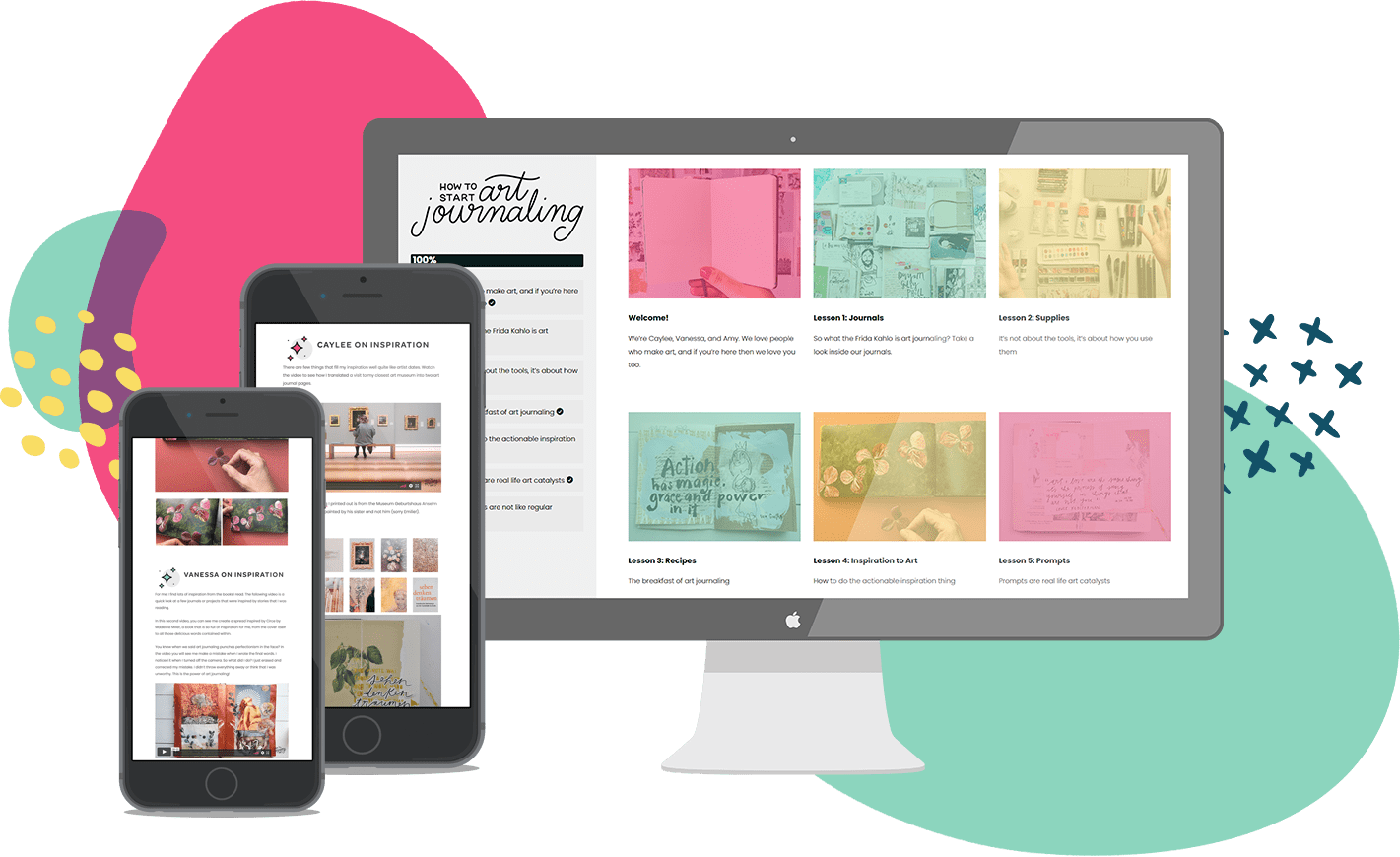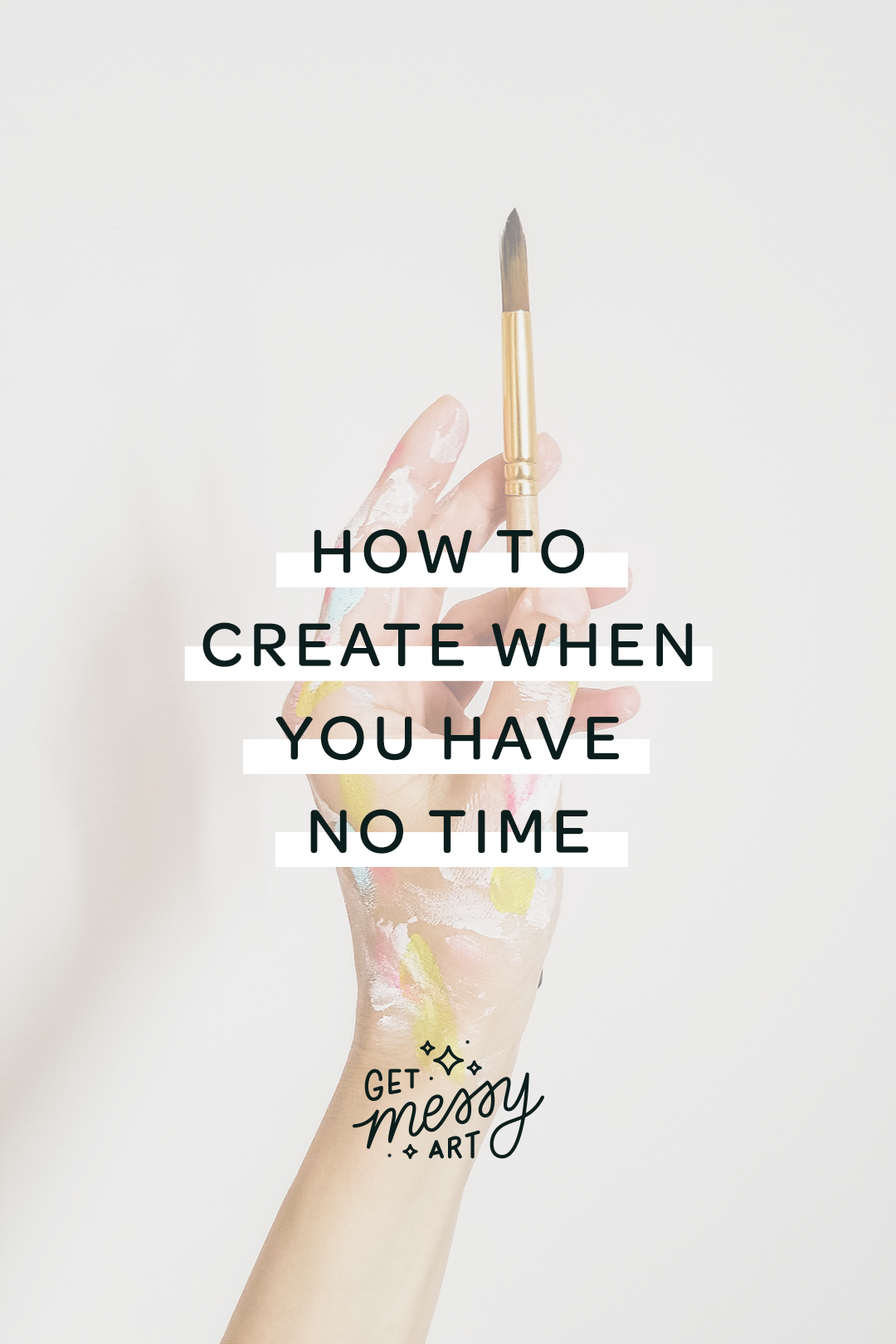So much creative energy, so little time. Somehow, twenty-four hours in a day never seems like enough to do all of those things we have to do, let alone those things that we really want to do … and “not having enough time” is without a doubt one of the top excuses cited by those who want to make art but don’t. If that’s you, I’m here to help you out. Here are 15 ways to make art when you have no time.
1. Create on your way to or from work
Finding the time to create is a huge challenge, particularly if you’ve got a full-time job. Getting out of the house in the morning is a rush-and-a-half, and you’re far too exhausted when you get home in the evening to even contemplate making art. Creating while commuting – particularly in the mornings, when you haven’t yet been beaten down by the day – is a great way to combat this. So whip out your drawing, your knitting or your art journal the next time you’re on the train.
2. Always have a project on the go which doesn’t require long stretches of time
Sure, there are some artworks that we need to invest vast amounts of time in, and that’s a good thing. But sometimes we go through periods in our lives where we just simply don’t have enough time to get into the zone. For these times, projects which we can dip in and out of are lifesavers. I swear my mum once spent over ten years on the one cross-stitch. It took forever and a day, but she completed it eventually. Figure out a project which you can chip away at, piece by humble little piece.
3. Make an inventory of all your daily tasks
Where do you spend your time? It helps to start out by knowing what you’re actually working with, so make a list of all the things you do on any given day. Like, literally – step by step. Get specific. Include the big things, the little things and the random in-between things: brushing your teeth, making lunches, staring into space, texting people back. Once you’re done, go through list. What are you spending time on that doesn’t align with your values, goals or necessary tasks? Be honest with yourself about whether it’s really necessary, and if it’s not – scrap it to make some space for your creative practice.
4. Batch it
You’ll probably recognise a couple of patterns or themes in your routine. A great way to create time for your art making is to batch similar tasks together, instead of spending time on them each and every day. Are you cooking dinner for an hour each day, five nights a week? Consider creating more free time on weeknights by meal prepping on a Sunday. There are a bunch of other tasks that can be batched – heck, you can even batch your art making. Try setting aside a couple of hours one day a week for your making, instead of stealing small scraps of time here and there.
5. Build art into a necessary daily action
Find something you have to do, and figure out a way to make it art. Take photos when you take your dog for a walk. Mull over your colour combinations when you’re on the way to picking your kids up from school. After watering your plants, use any leftover water to mix into your watercolours and make a couple of brushstrokes. I’ve talked previously about how I built art making into my morning coffee routine, and Get Messian Rosie will surely go down in history for her genius move of keeping a sketchbook by the microwave and doodling while waiting for her food to heat up. If that isn’t a way to squeeze your art making into a hectic routine, I don’t know what is.
6. Create a travel art kit
Pick out a small selection of your favourite portable art supplies and bung ’em into a pencil case. Make it small enough to fit into your smallest handbag or backpack, and voila, you now have a travel art kit. Take it with you everywhere you go, and get making in those in-between moments: on your commute, when your friend is late to lunch, while you’re waiting in line.
7. Draw on your lunch break
Speaking of lunch, what a time to make if you’re working a 9-5 job. This is your half an hour or hour to yourself to eat and re-energise. And what better way to re-energise than taking time for something which brings you joy? The lunch hour is not only a great time for people-watching but people-drawing. If you prefer to absorb yourself in nature, you might find a quiet spot in the sun and draw the plants around you.
8. Assess your daily energy levels
Are you a morning person or a night owl? Does your energy usually slump in the afternoons, say – right about the time when you usually sit down to make art? Figure out what time of day you have the most energy, and plan in your art making to fit in with that. On the other hand, if you know that particular tasks energise you, plan them into those times of day when your energy tends to lag.
9. Wake up half an hour earlier
No blog post about time management would be complete without the recommendation to wake up earlier. Lay your art journal or other supplies out the night beforehand so they’re ready to go, in the same way that you’d lay out your sport gear if you intended to go for a jog in the morning. Then, set your alarm for half an hour earlier than usual. Forgo the temptation of the snooze button, roll out of bed and over to your art supplies. If you can’t face half an hour, start with fifteen minutes. That’s still an extra fifteen minutes of creativity that you otherwise wouldn’t have had.
10. Limit time on social media
Facey, Insta and their cousins take up a LOT of our time, much of which is mindless scrolling and a way to fill up those in-between moments. I don’t need to say too much here – you know what I’m talking about. If you struggle self-regulating, use your phone’s screen time function to set limits on how much time you’re spending on them.
11. Download an art-making app
If you know you’ll struggle with limits on your screen time – or if you want to give digital art a whirl – download an art-making app like Tayasui Sketches or Superimpose. There are a stack of awesome apps out there, both free and paid. As someone who has traditionally been pretty anti-tech when it comes to my art making practice, I have been super surprised by how much I’ve loved dabbling with these apps.
12. Set up a dedicated art space
Whether you have your own studio, an art room, an unused corner or simply a kitchen table, it makes such a huge difference to be able to leave out your art supplies and/or your latest project. Those extra few steps of setting up and packing things away can be enough to deter us altogether from getting started, particularly if we have little-to-no time. Leaving your work out serves as both a visual reminder that there is art to be made and an invitation to sit down and make it.
13. Ask yourself if your house really needs to be that clean
Growing up, my family was best friends with another family who are the most adventurous people I’ve ever met. They lived in a ramshackle house full of dogs which was – let’s say, a mix between ordered chaos and pure chaos. In more recent years, the mother of the family told me,
“At some stage I realised that all that cleaning just takes time which I could be spending doing awesome things. And I knew that at the end of my life, I’d never say that I wish I’d spent more time cleaning”.
I will forever remember these words. No, there’s nothing wrong with being house-proud. We can, however, relax our tidiness standards a little bit in exchange for that precious time to do those things we’d rather be spending our lives doing.
14. Start blind contour drawing when you need to be observant
Certain activities require us to keep our eyes open, whether actively looking or just keeping an eye on things. Think looking after the kids, watching a soccer match, being a second set of eyes on the road when you’re a passenger on a road-trip. Blind contour drawing allows you to make art and strengthen the connection between eye, mind and hand, whilst being completely present in the act of observation. Give it a try it the next time you’re watching telly.
I talk more about my bling contour drawing process in this episode of the Get Messy podcast.
15. Learn to say no
We’re often quick to take on new responsibilities, to help out a friend or family member, or to say yes to a social occasion because we’re technically free. Practise taking your time before agreeing to do things, and say no if the proposed activity encroaches on your art making time.
…is actually learning to say yes
This stuff is hard, people. Waking up earlier, limiting your time on social media, figuring out how to weave art making more cleverly into your daily schedule…it’s a lot, and it might feel like extra things to do when you’re already struggling with the fifty-seven balls you’re currently juggling.
For me, it helps to bring it all back to my reasons for wanting to make a shift in the first place. When I boil it down to the facts, here’s what I’m left with: Making art fills me up, and because of this, I want to fill up my time up with art making. And in learning to say no to other demands on your time, you will slowly but surely be learning to say yes to yourself – day by day, step by step.



